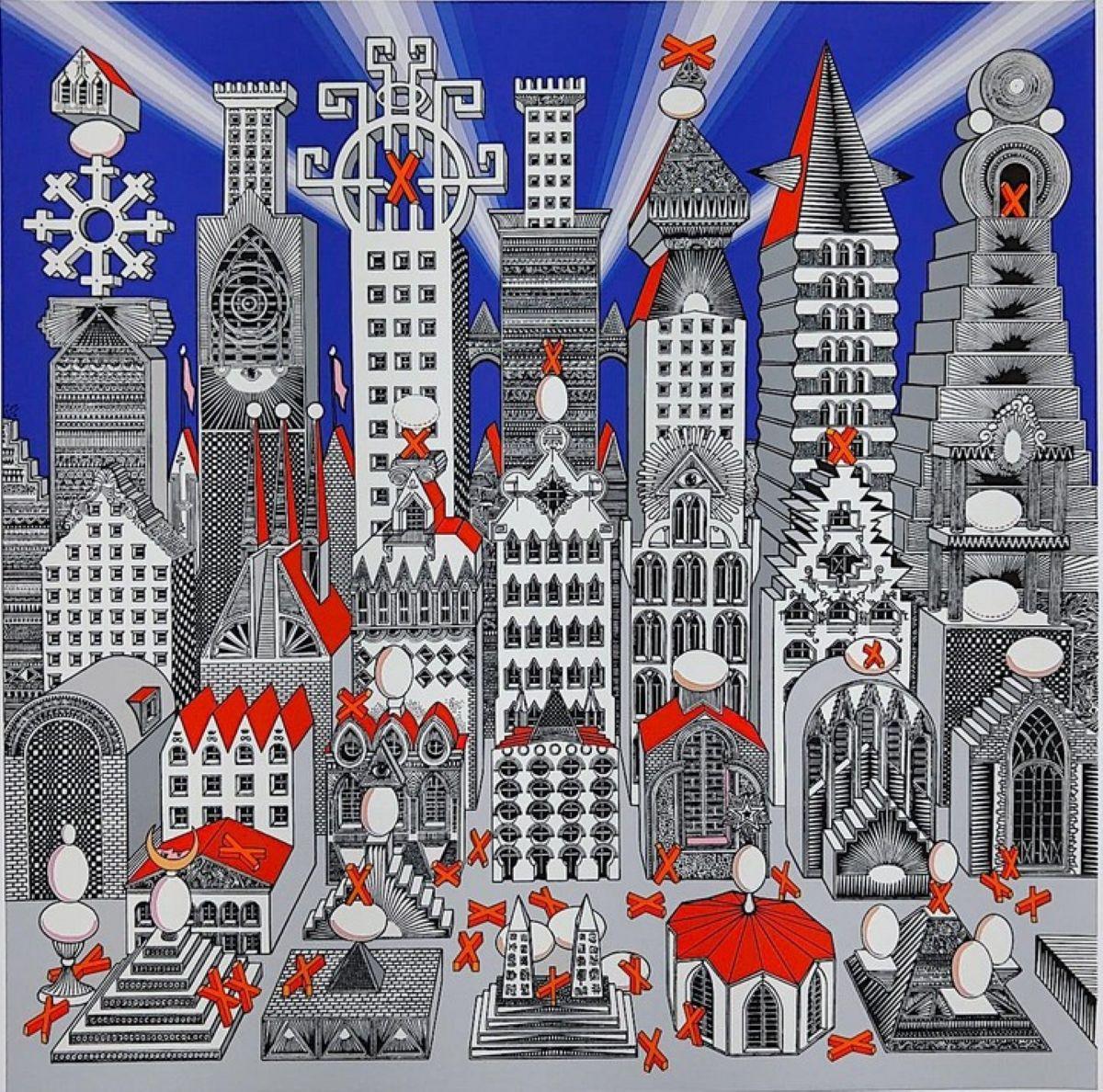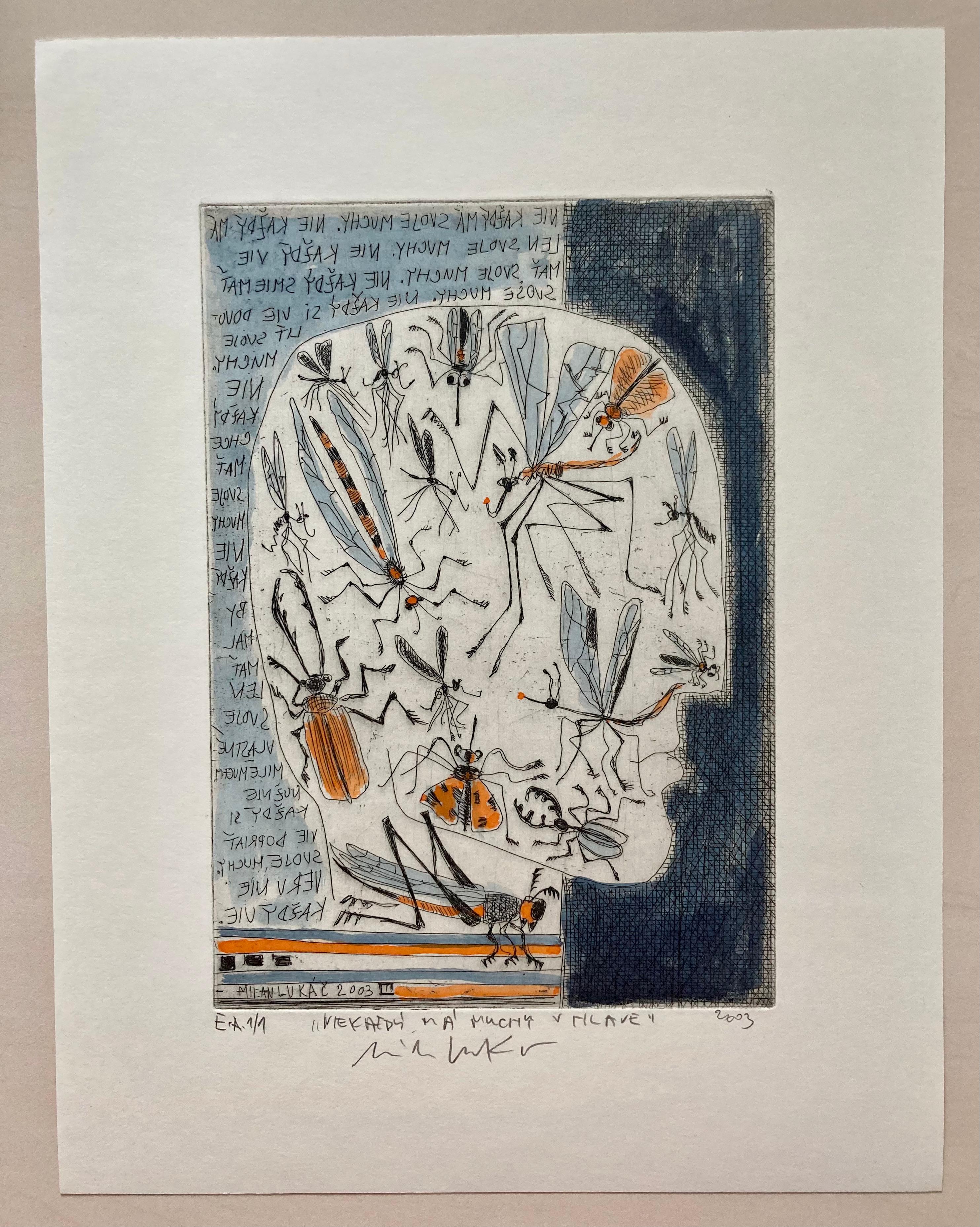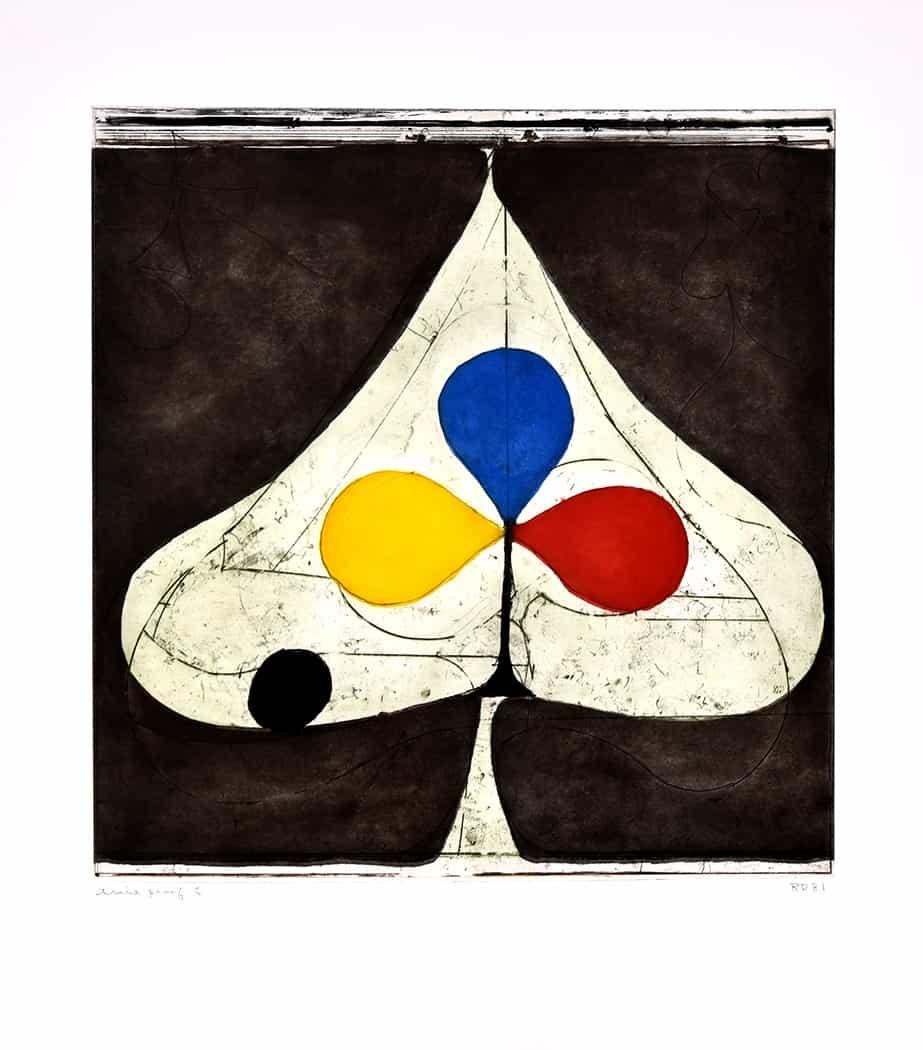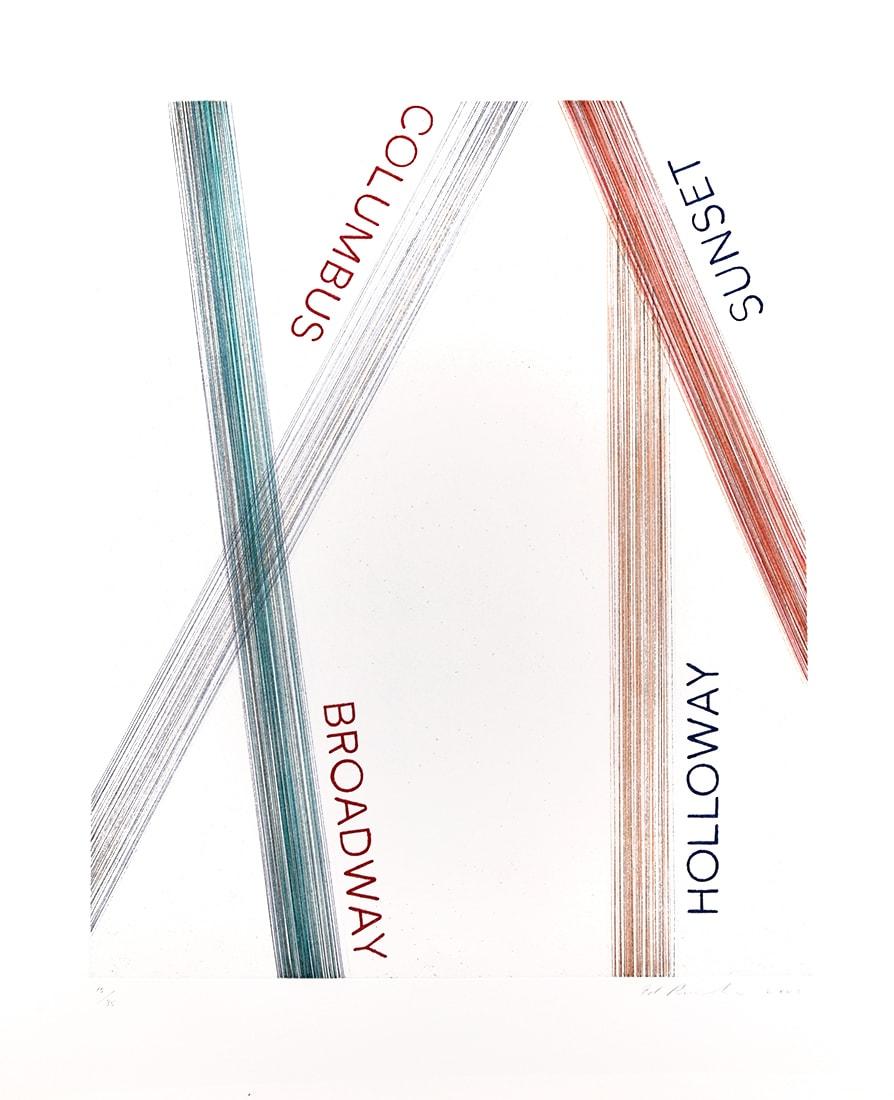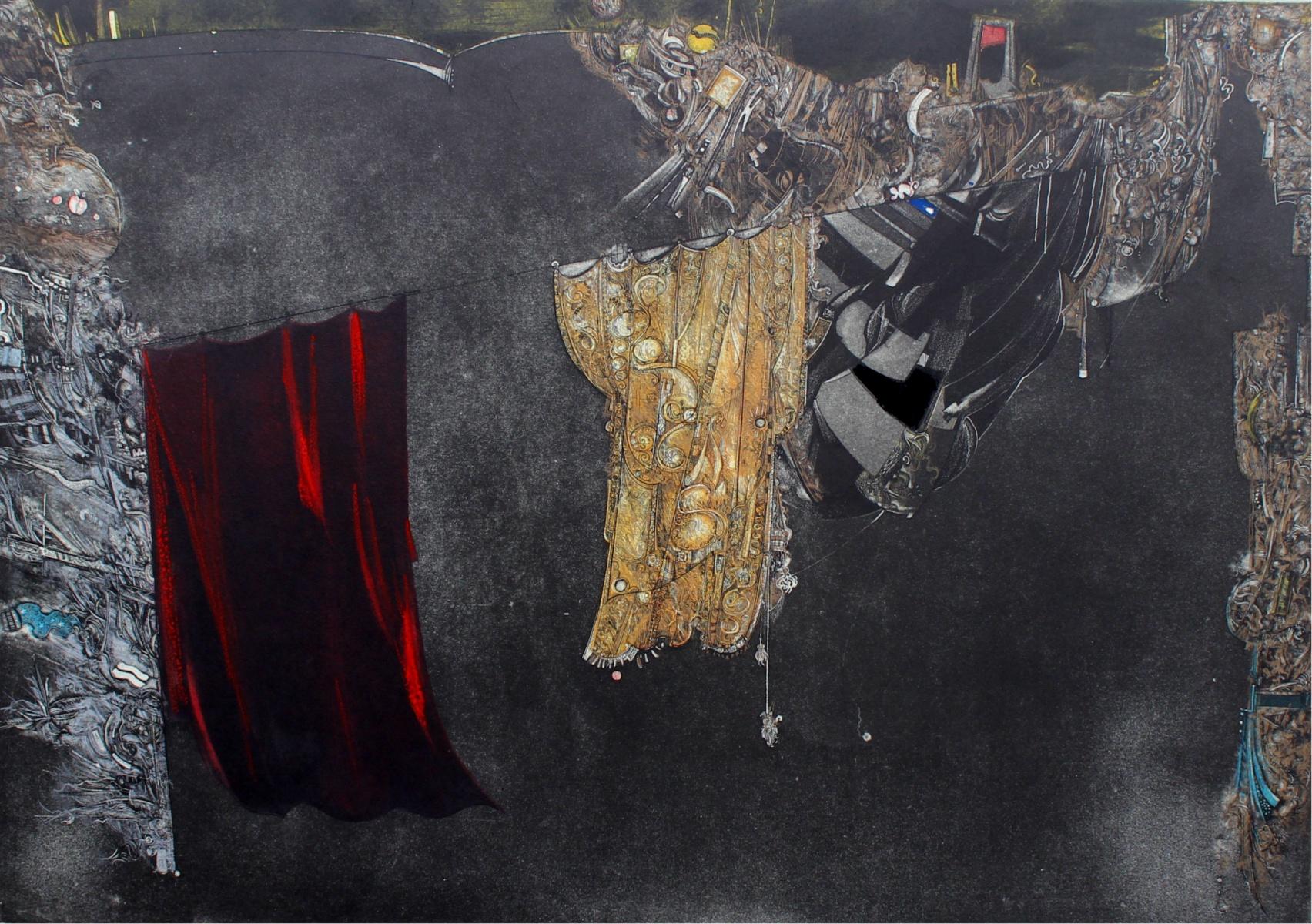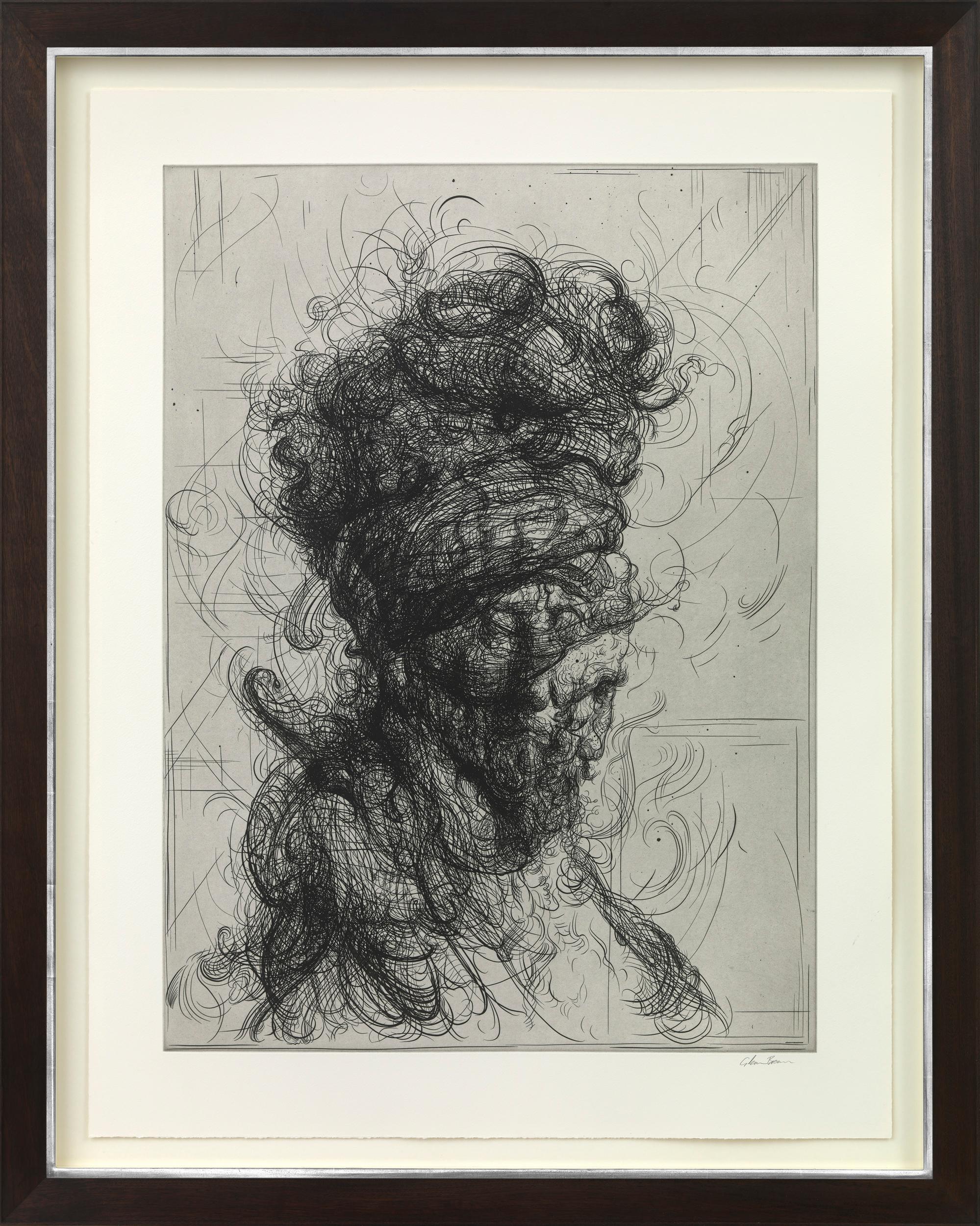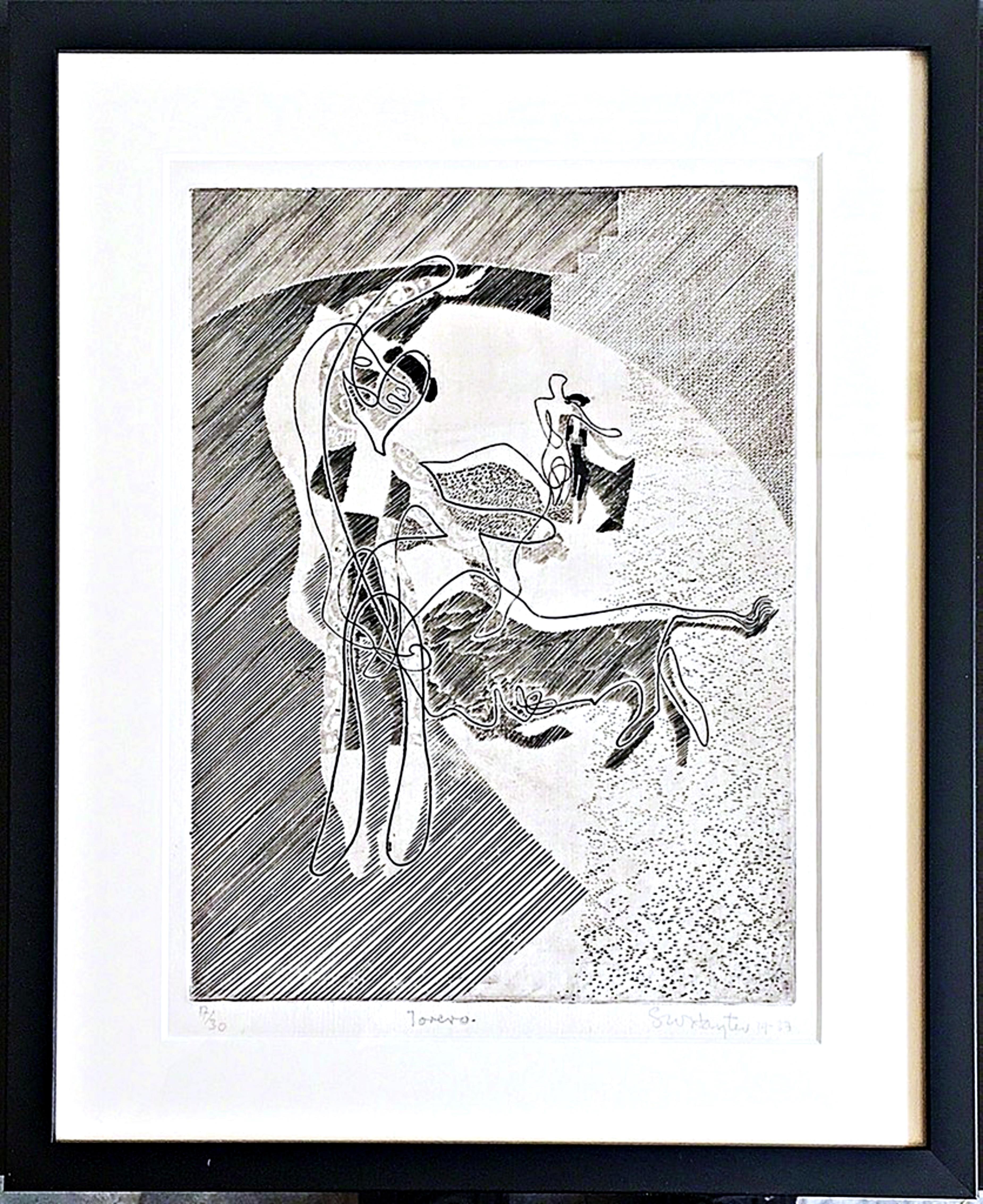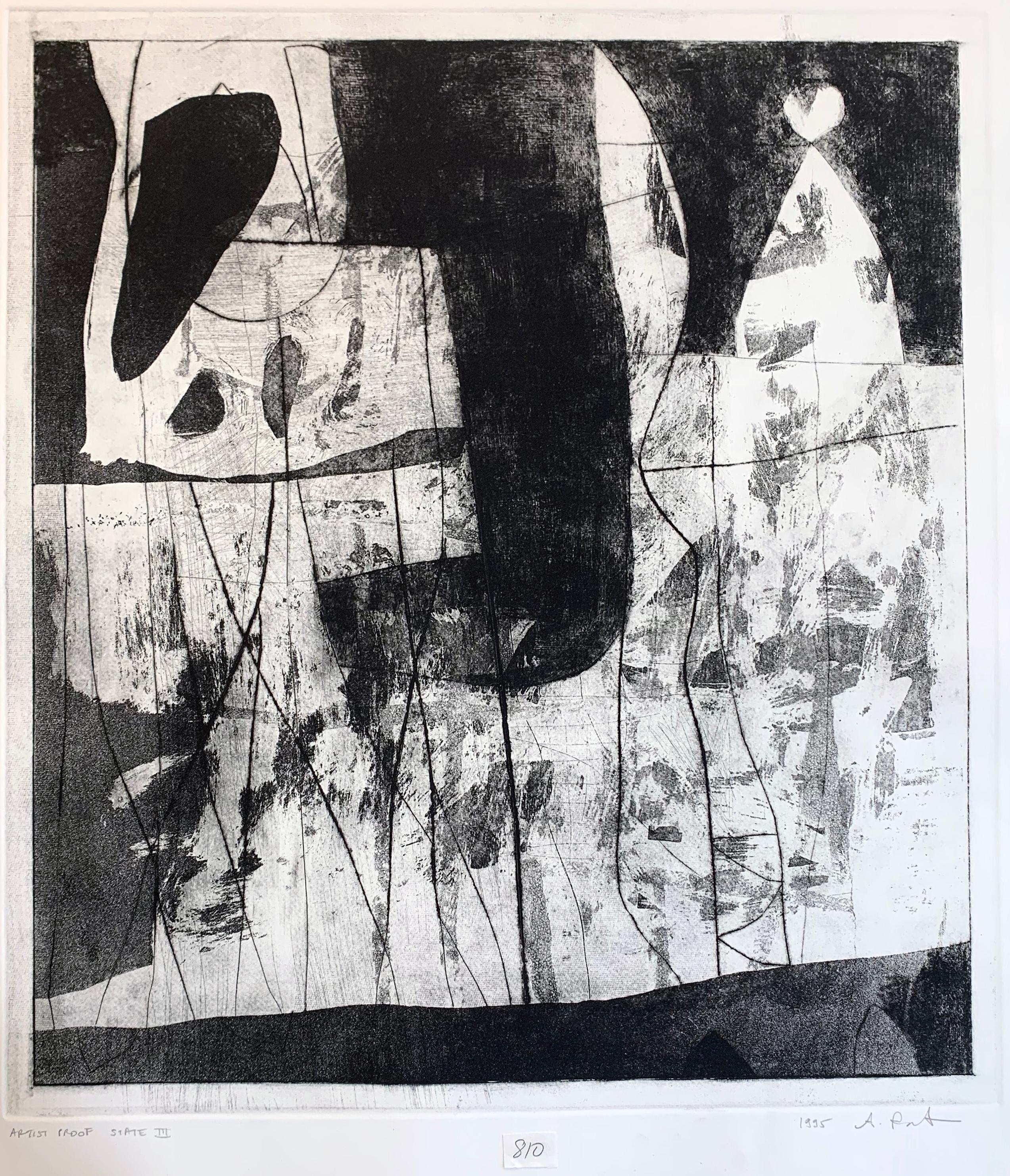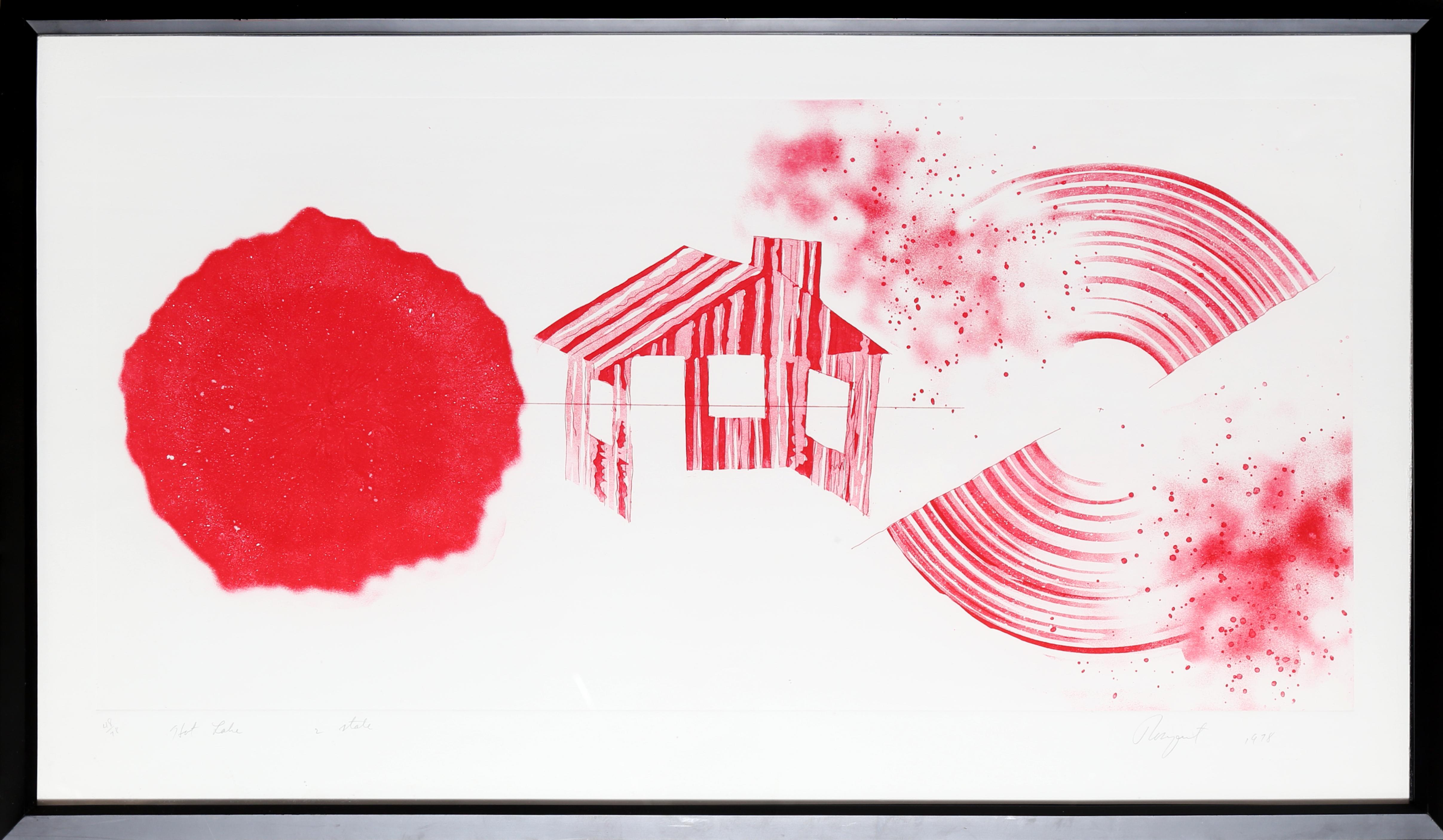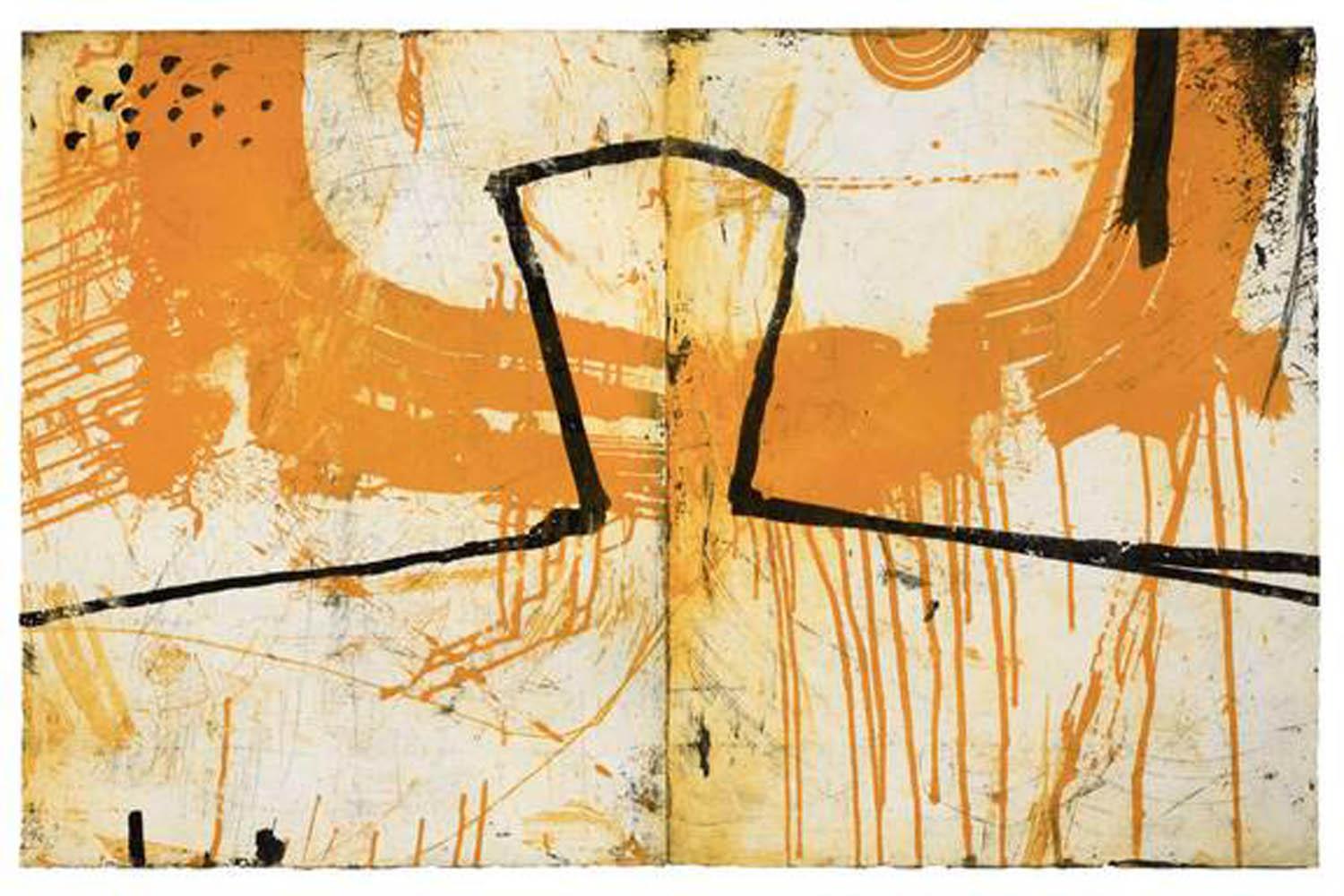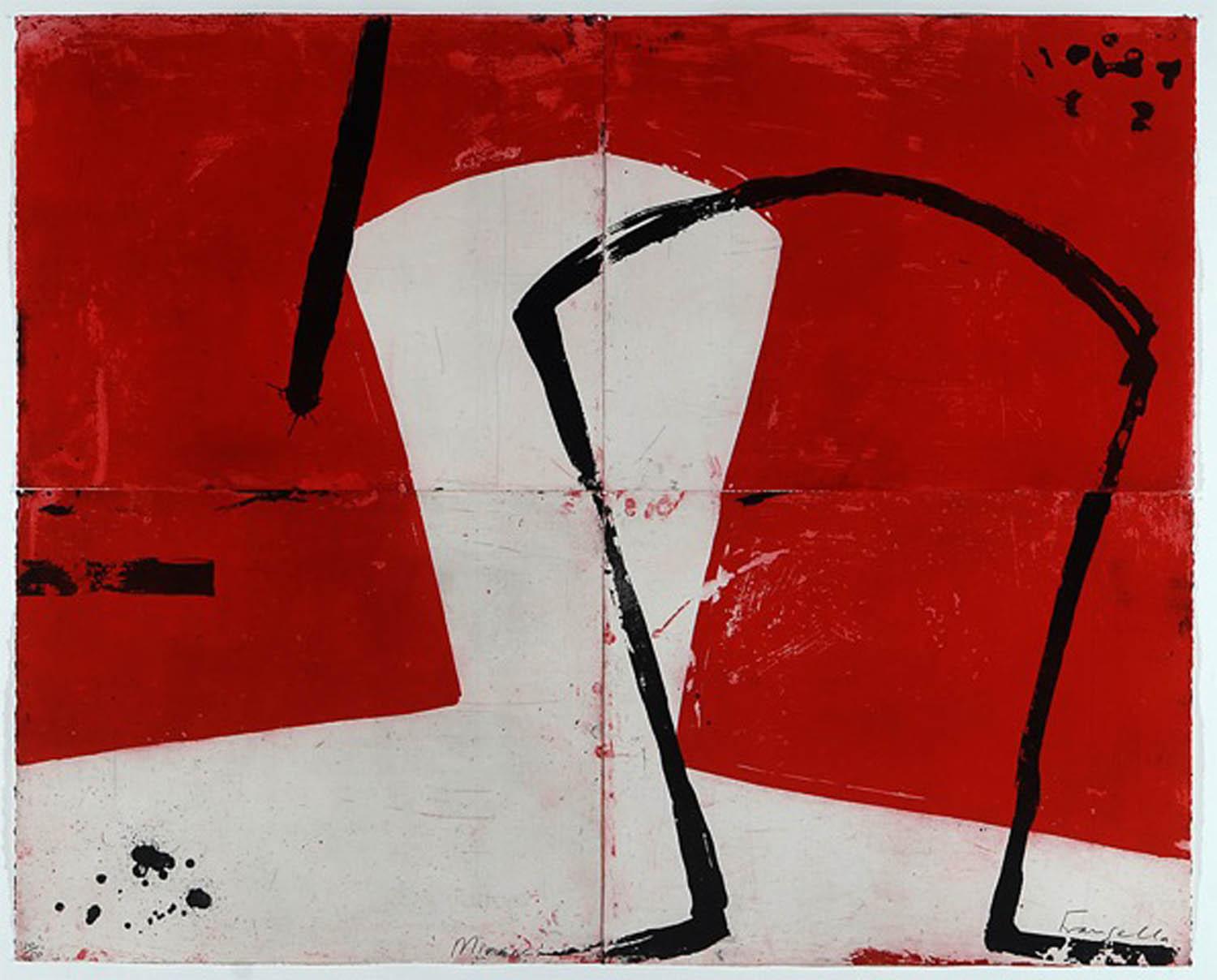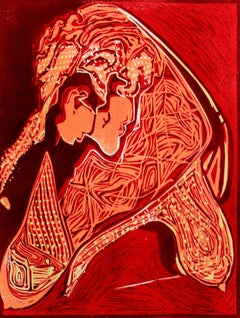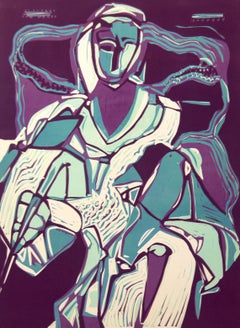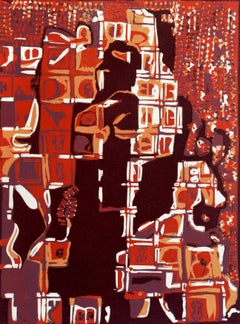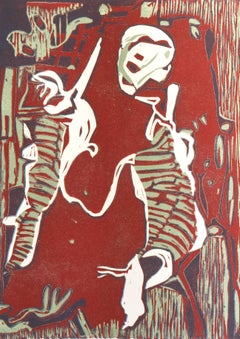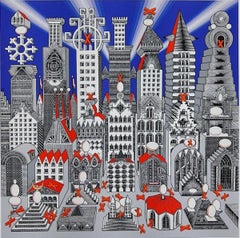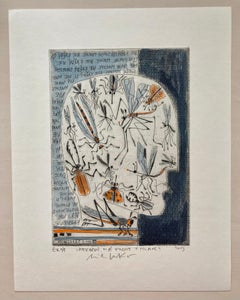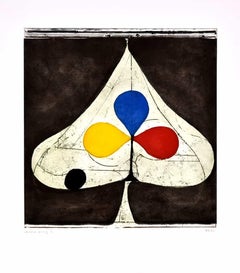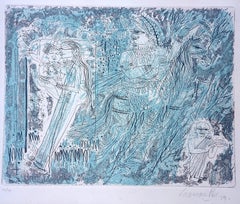
Indian Artist Paris Modern Published Etching Goa Mythology Narrative Blue Lovers
View Similar Items
Want more images or videos?
Request additional images or videos from the seller
1 of 19
Laxman PaiIndian Artist Paris Modern Published Etching Goa Mythology Narrative Blue Lovers1959
1959
Price:$686.55
$910.72List Price
About the Item
About the Seller
5.0
Vetted Professional Seller
Every seller passes strict standards for authenticity and reliability
Established in 1999
1stDibs seller since 2021
61 sales on 1stDibs
Authenticity Guarantee
In the unlikely event there’s an issue with an item’s authenticity, contact us within 1 year for a full refund. DetailsMoney-Back Guarantee
If your item is not as described, is damaged in transit, or does not arrive, contact us within 7 days for a full refund. Details24-Hour Cancellation
You have a 24-hour grace period in which to reconsider your purchase, with no questions asked.Vetted Professional Sellers
Our world-class sellers must adhere to strict standards for service and quality, maintaining the integrity of our listings.Price-Match Guarantee
If you find that a seller listed the same item for a lower price elsewhere, we’ll match it.Trusted Global Delivery
Our best-in-class carrier network provides specialized shipping options worldwide, including custom delivery.More From This Seller
View AllAbstract Print India Artist Proof Linocut Nature Earth Love Red Orange
By Mukesh Sharma
Located in Norfolk, GB
There is a natural and raw understanding in Mukesh Sharma’s prints that both depict, and are influenced by, the Rajastani communities of his home town in rural India. In these Limited Edition fine-art prints, made over a period of twenty years, we are offered the colours of India’s ancient land, the textures, light and the patterns that are everywhere. In the patterns of the arable fields to the jali's (carved screens) in the architecture. This work is however not romantic nor nostalgic but shows a deeper rooted need to offer a visual heritage of place, of where the artist is from and the journey that he is taking. The results are both compelling and honest.
Mukesh Sharma, Twin Showcase, Lino-cut on German Ivory paper
Edition: AP, 2005
Image size: 47 x 39 cm / Sheet size: 79 x 55 cm
Unframed
'We belong where love finds us'
Mukesh Sharma's work:
It is often in childhood that paths are set for what we will become. Mukesh Sharma hails from a rural, agricultural village in Rajasthan, India. His Father is a craftsman who fixed and mended farm machinery and understood the working parts in the processes. Sharma followed in his Father’s footsteps, as is often the case in Indian families, but his was not the machines of the fields but the presses of the printing studio.
Like his Father, Mukesh Sharma is fascinated with understanding how things work and how he can manipulate the metal in his hands. It is not surprising then that his medium of choice is printing. One of the most physically challenging of all the practices, it can often be physically challenging as well as technical and detailed.
In his youth, Sharma would draw with stones on walls and floors. He was lucky his family encouraged this and he is grateful for his early art-training at the Jaipur School of Art but it was at the Baroda Art Department that he was introduced to the great printing traditions of Jyoti Bhatt...
Category
Early 2000s Abstract Abstract Prints
Materials
Archival Ink, Archival Paper, Linocut, Archival Pigment
Abstract India Edition 3/5 Linocut Print Nature Love Purple Blue Turquoise
By Mukesh Sharma
Located in Norfolk, GB
There is a natural and raw understanding in Mukesh Sharma’s prints that both depict, and are influenced by, the Rajastani communities of his home town in rural India. In these Limite...
Category
Early 2000s Abstract Abstract Prints
Materials
Archival Ink, Archival Paper, Linocut, Archival Pigment
Abstract Landscape India Edition 3/5 Linocut Print Nature Red Orange Black
By Mukesh Sharma
Located in Norfolk, GB
There is a natural and raw understanding in Mukesh Sharma’s prints that both depict, and are influenced by, the Rajastani communities of his home town in rural India. In these Limited Edition fine-art prints, made over a period of twenty years, we are offered the colours of India’s ancient land, the textures, light and the patterns that are everywhere. In the patterns of the arable fields to the jali's (carved screens) in the architecture. This work is however not romantic nor nostalgic but shows a deeper rooted need to offer a visual heritage of place, of where the artist is from and the journey that he is taking. The results are both compelling and honest.
Mukesh Sharma, Celebration “O”, Lino-cut chin-coll’e on German Ivory paper
Edition: 3 of 5, 2005
Image size: 50 x 33 cm / Sheet size: 79 x 55 cm
Unframed
"In this piece I use multiple layering of image, repetition of shape, layered shapes to inform my life celebration and my investigation into Indian culture"
Mukesh Sharma's work:
It is often in childhood that paths are set for what we will become. Mukesh Sharma hails from a rural, agricultural village in Rajasthan, India. His Father is a craftsman who fixed and mended farm machinery and understood the working parts in the processes. Sharma followed in his Father’s footsteps, as is often the case in Indian families, but his was not the machines of the fields but the presses of the printing studio.
Like his Father, Mukesh Sharma is fascinated with understanding how things work and how he can manipulate the metal in his hands. It is not surprising then that his medium of choice is printing. One of the most physically challenging of all the practices, it can often be physically challenging as well as technical and detailed.
In his youth, Sharma would draw with stones on walls and floors. He was lucky his family encouraged this and he is grateful for his early art-training at the Jaipur School of Art but it was at the Baroda Art Department that he was introduced to the great printing traditions of Jyoti Bhatt...
Category
Early 2000s Abstract Abstract Prints
Materials
Archival Ink, Archival Paper, Linocut, Archival Pigment
Abstract Landscape India Edition 3/5 Linocut Print Nature Red Navy Primitive
By Mukesh Sharma
Located in Norfolk, GB
There is a natural and raw understanding in Mukesh Sharma’s prints that both depict, and are influenced by, the Rajastani communities of his home town in rural India. In these Limited Edition fine-art prints, made over a period of twenty years, we are offered the colours of India’s ancient land, the textures, light and the patterns that are everywhere. In the patterns of the arable fields to the jali's (carved screens) in the architecture. This work is however not romantic nor nostalgic but shows a deeper rooted need to offer a visual heritage of place, of where the artist is from and the journey that he is taking. The results are both compelling and honest.
Mukesh Sharma, Frenzy M3, Lino-cut chin-coll’e on German Ivory paper
Edition: 3 of 5, 2005
Image size: 50 x 33 cm / Sheet size: 79 x 55 cm
Unframed
'In this work in particular I feel that a true work of art is the creation of an experience from the interaction between the human self and the outside world'
Mukesh Sharma's work:
It is often in childhood that paths are set for what we will become. Mukesh Sharma hails from a rural, agricultural village in Rajasthan, India. His Father is a craftsman who fixed and mended farm machinery and understood the working parts in the processes. Sharma followed in his Father’s footsteps, as is often the case in Indian families, but his was not the machines of the fields but the presses of the printing studio.
Like his Father, Mukesh Sharma is fascinated with understanding how things work and how he can manipulate the metal in his hands. It is not surprising then that his medium of choice is printing. One of the most physically challenging of all the practices, it can often be physically challenging as well as technical and detailed.
In his youth, Sharma would draw with stones on walls and floors. He was lucky his family encouraged this and he is grateful for his early art-training at the Jaipur School of Art but it was at the Baroda Art Department that he was introduced to the great printing traditions of Jyoti Bhatt...
Category
Early 2000s Abstract Abstract Prints
Materials
Archival Ink, Archival Paper, Linocut, Archival Pigment
Abstract Landscape India Edition 3/5 Linocut Print Nature Green Yellow Leaves
By Mukesh Sharma
Located in Norfolk, GB
There is a natural and raw understanding in Mukesh Sharma’s prints that both depict, and are influenced by, the Rajastani communities of his home town in rural India. In these Limited Edition fine-art prints, made over a period of twenty years, we are offered the colours of India’s ancient land, the textures, light and the patterns that are everywhere. In the patterns of the arable fields to the jali's (carved screens) in the architecture. This work is however not romantic nor nostalgic but shows a deeper rooted need to offer a visual heritage of place, of where the artist is from and the journey that he is taking. The results are both compelling and honest.
Mukesh Sharma, Untitled, Lino-cut chin- coll’e on German Ivory paper
Edition: 3 of 5, 1999
Image size: 50 x 33 cm / Sheet size: 79 x 55 cm
Unframed
'This work reminds me of my childhood and early youth, growing up in a village that was full of nature, surrounded by lush green. The towering Aravalli hills left a strong impression on me.'
Mukesh Sharma's work:
It is often in childhood that paths are set for what we will become. Mukesh Sharma hails from a rural, agricultural village in Rajasthan, India. His Father is a craftsman who fixed and mended farm machinery and understood the working parts in the processes. Sharma followed in his Father’s footsteps, as is often the case in Indian families, but his was not the machines of the fields but the presses of the printing studio.
Like his Father, Mukesh Sharma is fascinated with understanding how things work and how he can manipulate the metal in his hands. It is not surprising then that his medium of choice is printing. One of the most physically challenging of all the practices, it can often be physically challenging as well as technical and detailed.
In his youth, Sharma would draw with stones on walls and floors. He was lucky his family encouraged this and he is grateful for his early art-training at the Jaipur School of Art but it was at the Baroda Art Department that he was introduced to the great printing traditions of Jyoti Bhatt...
Category
Early 2000s Abstract Abstract Prints
Materials
Archival Ink, Archival Paper, Linocut, Archival Pigment
Abstract India Edition 5/8 Linocut Print Nature Orange Black Red Love
By Mukesh Sharma
Located in Norfolk, GB
There is a natural and raw understanding in Mukesh Sharma’s prints that both depict, and are influenced by, the Rajastani communities of his home town in rural India. In these Limited Edition fine-art prints, made over a period of twenty years, we are offered the colours of India’s ancient land, the textures, light and the patterns that are everywhere. In the patterns of the arable fields to the jali's (carved screens) in the architecture. This work is however not romantic nor nostalgic but shows a deeper rooted need to offer a visual heritage of place, of where the artist is from and the journey that he is taking. The results are both compelling and honest.
Mukesh Sharma, Voted Dyas II, Lino-cut/ chine colle, on German Ivory paper
Edition: 5 of 8, 1999
Image size: 47 x 39 cm / Sheet size: 79 x 55 cm
Unframed
'We belong where love finds us'
Mukesh Sharma's work:
It is often in childhood that paths are set for what we will become. Mukesh Sharma hails from a rural, agricultural village in Rajasthan, India. His Father is a craftsman who fixed and mended farm machinery and understood the working parts in the processes. Sharma followed in his Father’s footsteps, as is often the case in Indian families, but his was not the machines of the fields but the presses of the printing studio.
Like his Father, Mukesh Sharma is fascinated with understanding how things work and how he can manipulate the metal in his hands. It is not surprising then that his medium of choice is printing. One of the most physically challenging of all the practices, it can often be physically challenging as well as technical and detailed.
In his youth, Sharma would draw with stones on walls and floors. He was lucky his family encouraged this and he is grateful for his early art-training at the Jaipur School of Art but it was at the Baroda Art Department that he was introduced to the great printing traditions of Jyoti Bhatt...
Category
Early 2000s Abstract Abstract Prints
Materials
Archival Ink, Archival Paper, Linocut, Archival Pigment
You May Also Like
After Lunch Howard Hodgkin: Abstract black white painting, dots lines texture
By Howard Hodgkin
Located in New York, NY
Abstract black and white hand painted print of interior scene with dots, lines, shadow and painted brushstroke texture. Ideal for display in minimalist, modern and contemporary space...
Category
Late 20th Century Abstract Figurative Prints
Materials
Paint, Gouache, Etching
Pedro Friedeberg "Ciudad de un millón con 25 huevos duros" Silkscreen
By Pedro Friedeberg
Located in Cuauhtemoc, Ciudad de México
WE WILL SHIP THIS ARTWORK WORK TO YOU WITH A COURTESY PEDRO FRIEDEBERG STYLE BLACK AND GOLD STRIPED FRAME . . . .
Pedro Friedeberg is an Italian-born Mexican artist and designer kn...
Category
21st Century and Contemporary Abstract Abstract Prints
Materials
Etching
Not Everybody does have Flies in his Head
Located in Slovak Republic, SK
Etching on fine art paper, E.A. 1/1 from the cycle " Botanical Dream Nr. 11", recently presented in the Danubiana Meulenstein Art Museum in Bratislava.
Category
21st Century and Contemporary Abstract Abstract Prints
Materials
Etching
$668 Sale Price
20% Off
Tri-Color II
By Richard Diebenkorn
Located in Palo Alto, CA
Chuck Close Self Portrait, 2012 is hand-signed by Chuck Close (Washington, 1940 - New York, 2021) in pencil in the lower right margin and is ...
Category
1980s Abstract Expressionist Figurative Prints
Materials
Etching, Aquatint
Price Upon Request
L.A.S.F. #3
By Ed Ruscha
Located in Palo Alto, CA
Created in 2003, this color soft-ground etching is hand-signed by Ed Ruscha (Nebraska, 1937 - ) in pencil in the lower right margin. Numbered from the edition of 35 in pencil in the ...
Category
Early 2000s Abstract Expressionist Figurative Prints
Materials
Etching
Price Upon Request
The better curtain - XX century, Mixed media print, Abstract, Black Red & Yellow
By Jacek Sowicki
Located in Warsaw, PL
JACEK SOWICKI (born in 1948)
He studied at the Academy of Fine Arts in Cracow and graduated from the Academy Of Fine Arts in Warsaw in 1973. In 1984-89 he run the graphics atelier at...
Category
Late 20th Century Abstract Figurative Prints
Materials
Paper, Mixed Media, Etching
